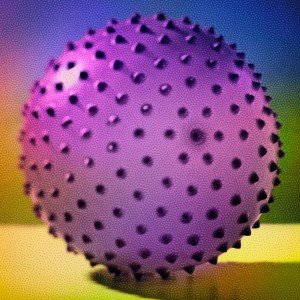Photography as we are accustomed, does not represent the full factuality of the real world. This is in part due to optical restrictions of both the lens of a camera as well as the natural ways in which we experience the world through our eyes.
New digital technologies such as 3d, hdr, focus stacking, haptic (touch) and light field allow us to record and see the world in new and exciting photographic ways. They allow us to recreate the world to appear and possibly feel, more like it exists in real life. They can allow us to experience our world in new and exciting ways and bring us closer to a real-world representation of physical space.
Over time and with additional technology, this will change how we view photography, capture our subjects and how we explore our world.
One example of this new way of producing images is something called focus stacking. In order to obtain a sharp image using traditional methods, the lens is stopped down to produce a zone of relative sharpness. That zone of relative sharpness is still not as sharp as the actual point of focus. With focus stacking, the final image is produced from many focus points throughout the subject, along the lens axis. The images, perhaps a hundred or so, are stacked and algorithmically separated and re-stacked into only those areas that are sharply focused. Think of it as a stacking of sharpness points. The resulting image is one that represents the entire Z dimension of the object in sharp focus. The Z dimension is the depth view that extends away and toward the camera lens. In the future, we will probably achieve this with light field technology. 3D stereo will enhance the effect and so will HDR technology. 3D will allow us to experience the depth and HDR will allow us to reproduce all of the details throughout the highlight/shadow range. At some point, we will be able to reach out and touch the surfaces we photograph using haptic (touch) technology.
Depth-of-field and focus only exists via the lens of a camera and the view of the eye. Every single thing existing in the real world exists in spite of our ability to see all of it at the same instant. The sand on the beach a half-mile or a thousand miles away is just as solid and real as the sand we can see at our feet. It has surface, density, transparency, textures, and dimension that exist in spite of our visual limitations. The world has no focus. It simply exists.
Everything that is visually perceptible in our view has texture or visual indicators of its existence. The eye only sees sharply what is at its center. Even when we look at a totally sharp image that has been captured using the best lenses, the latest technique and the most sophisticated means of reproduction, we only see the center point of our image sharply. As a result, the eye observes a photograph of an object in the same way the object is viewed in the real world. As a result of our vision, we have to scan the scene, the image or a page to read it. As we scan, we see the whole scene within our periphery view. The peripheral view is always to varying degree, out of focus to our eye. Only the center is sharp.
Sharp centered viewing is what allows us to read the type on this page as individual words and letters. It also allows us to concentrate on singular subjects within our field of vision. It allows us to find things and to differentiate what is in our view.
The more the image becomes like the realistic three-dimensional world in which it exists, the more it represents the physical reality of our world.
I believe that the future will bring us camera systems, which will produce much more lifelike, more dimensional, and reality based imagery. At that point, we will be able to experience the image in many new ways, which more or less duplicate the real world experience.
Please have a look at some of my other posts here.
NOTICE of Copyright: THIS POSTING AS WELL AS ALL PHOTOGRAPHS, GALLERY IMAGES, AND ILLUSTRATIONS ARE COPYRIGHT © JOHN NEEL AND ARE NOT TO BE USED FOR ANY PURPOSE WITHOUT WRITTEN CONSENT FROM THE WRITER, THE PHOTOGRAPHER AND/OR lensgarden.com. THE IDEAS EXPRESSED ARE THE PROPERTY OF THE PHOTOGRAPHER AND THE AUTHOR.


